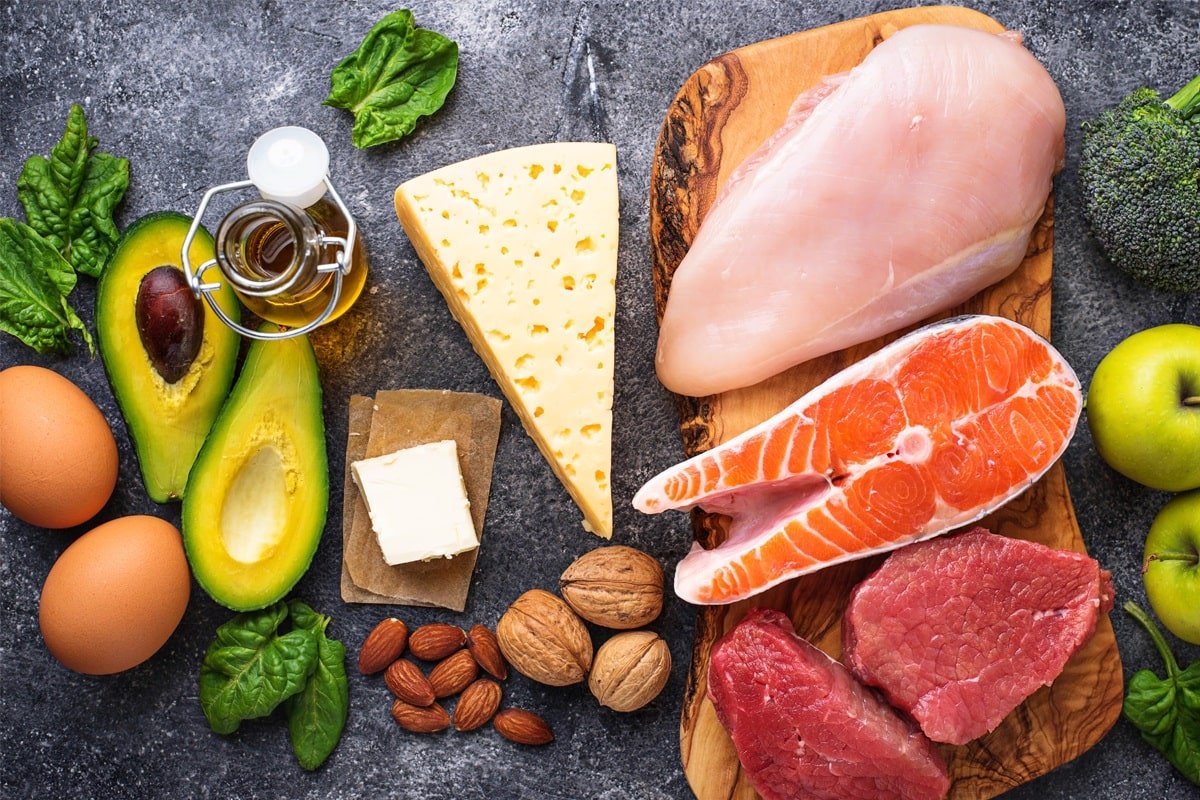New to keto? Nexus Mag shares a comprehensive 10-step guide to start a keto diet for beginners, including tips for vegetarians and vegans to achieve ketosis naturally and sustain a healthier lifestyle.
Understanding the Keto Diet
The ketogenic (keto) diet is a low-carb, high-fat eating plan that shifts your body into ketosis, a metabolic state where it burns fat for fuel instead of glucose. Typically, it involves consuming 60–80% of daily calories from fat, 15–20% from protein, and only 5–10% from carbohydrates. Unlike the standard American diet, which is heavy in carbs like bread, pasta, and sugary snacks, keto depletes glycogen stores, prompting the liver to produce ketones as an alternative energy source for the brain and body. Research highlights benefits like weight loss, improved insulin sensitivity (by up to 75% in some studies), reduced inflammation, and potential therapeutic effects for conditions like epilepsy and neurological disorders. However, keto’s restrictive nature means it’s not for everyone, so consult a healthcare professional before starting (~$50–$100 for a visit).
Is Keto Suitable for Vegetarians or Vegans?
Absolutely, vegetarians and vegans can adapt keto with careful planning. Vegetarians can rely on eggs, full-fat dairy (if minimally processed), avocados, nuts, and seeds for healthy fats and protein. Vegans can prioritize coconut oil, olive oil, avocados, and low-carb nuts like macadamia while avoiding high-carb grains and legumes. Challenges include sourcing enough protein and avoiding hidden carbs in plant-based foods like processed meat substitutes. Use apps like Cronometer (~$5/month) to track macros and ensure 20–30g net carbs daily. Low-carb veggies like spinach and kale (~$5/week) are key, and supplements like B12 or omega-3 (~$10/month) may be needed to prevent deficiencies. With planning, plant-based keto is sustainable and effective.
Why Start a Keto Diet?
Keto’s appeal lies in its ability to transform how your body uses energy. By reducing carbs, you force your body to burn stored fat, leading to weight loss (often 5–10 pounds in the first month). Beyond aesthetics, keto can stabilize blood sugar, enhance mental clarity, and reduce cravings. For beginners, the transition can feel daunting, but a gradual approach minimizes side effects like “keto flu” (fatigue, irritability). This guide offers 10 easy steps to ease you into ketosis, with practical tips and cost estimates to keep it budget-friendly (~$5–$100/week).
10 Easy Steps to Start a Keto Diet
Follow these beginner-friendly steps to achieve ketosis smoothly:
1. Eliminate Processed Foods
Processed foods like packaged breads, sugary snacks, and sodas contain additives (e.g., high-fructose corn syrup) that cause inflammation and hinder ketosis. These foods are often packed with hidden carbs and preservatives like sodium nitrate, which can lead to water retention and slow metabolism.
Tip: Read nutrition labels and avoid ingredients you can’t pronounce (~free). Replace processed snacks with whole foods like nuts or avocados. Takes 1–2 weeks.
Benefit: Enhances natural body function and speeds ketosis.
2. Reduce Carb Intake Gradually
Limit carbs to 20–30g net daily (total carbs minus fiber) to trigger ketosis. Most people consume 100–200g daily, so a sudden drop can shock the body.
Tip: Cut out high-carb foods like pasta, rice, and sugary fruits (e.g., bananas, mangoes). Start by halving carbs over 2 weeks (~free).
Benefit: Eases body into fat-burning mode, reducing keto flu risk.
3. Prioritize Low-Carb Vegetables
Low-carb veggies provide essential fiber, vitamins, and minerals, preventing deficiencies and supporting digestion on a high-fat diet.
Tip: Stock up on spinach, kale, broccoli, or zucchini (~$5–$10/week). Aim for 2–3 cups daily.
Benefit: Optimizes ketosis and gut health in 1–2 weeks.
4. Boost Healthy Fats
Fats should account for 70% of calories (165–180g daily on a 2,000-calorie diet) to fuel ketosis.
Tip: Add olive oil, coconut oil, avocados, or full-fat cheese (if vegetarian) to meals (~$5–$10/week). Drizzle oil on salads or blend into coffee. Avoid processed fats like margarine.
Benefit: Sustains energy and ketosis instantly.
5. Moderate Protein Intake
Keep protein at 65–80g daily to avoid gluconeogenesis, where excess protein converts to glucose, disrupting ketosis.
Tip: Choose eggs, fish, tofu, or tempeh for plant-based diets (~$5/week). Adjust based on exercise intensity.
Benefit: Preserves muscle mass while maintaining ketosis in 1–2 weeks.
6. Incorporate Exercise
Exercise depletes glycogen stores, accelerating ketosis. Even light activity helps.
Tip: Start with 10–20 20-minute walks or yoga (~free). Increase to 30 minutes weekly.
Benefit: Speeds ketosis in 5–7 days and boosts energy.
7. Stay Hydrated with Electrolytes
Keto’s diuretic effect can cause dehydration, leading to keto flu symptoms like fatigue, nausea, or constipation.
Tip: Drink 8–10 glasses of water daily and add electrolytes via bone broth, Himalayan salt, or pickle juice (~$5/week). Monitor hydration daily.
Benefit: Reduces symptoms in 12–24 hours.
8. Prepare for Keto Flu
Transitioning to ketosis may cause temporary symptoms like irritability, dizziness, or poor focus, known as keto flu.
Tip: Transition gradually over 2–3 weeks and stay hydrated (~free). Consult a doctor if symptoms persist beyond 3 weeks.
Benefit: Minimizes discomfort and eases adaptation.
9. Avoid Common Mistakes
Mistakes like consuming hidden carbs in drinks (e.g., juice, lattes) or neglecting hydration can derail ketosis.
Tip: Stick to keto-friendly drinks like black coffee, tea, or water (~free). Check labels for added sugars or preservatives.
Benefit: Sustains ketosis and prevents setbacks.
10. Plan Social and Meal Prep
Social dining and meal prep can challenge keto adherence, especially for beginners.
Tip: Use keto meal delivery services like Trifecta (~$100/week) or check restaurant menus in advance. Inform friends for support (~free).
Benefit: Maintains consistency and reduces stress.
Advanced Tips for Keto Success
- Meal Delivery Services: Trifecta offers pre-made keto meals, saving time (~$100/week). Ideal for busy beginners.
- Track Macros: Use apps like Cronometer to monitor carbs, fats, and protein (~$5/month).
- Avoid Cheat Days: They can disrupt ketosis for 1–3 days, delaying progress (~free).
- Supplements: Consider electrolytes, B12 (for vegans), or MCT oil (~$10–$20/month) to enhance ketosis.
- Social Support: Share your goals with friends or join keto communities on Reddit for motivation (~free).
Cost: Most steps are free or ~$5–$100/week, saving $100s on dietitians or medical costs.
Monitoring Ketosis
Measuring ketones isn’t mandatory, but it can confirm ketosis. Options include urine strips (~$10), breath tests, or blood monitors (~$50). Blood tests are most accurate, measuring ketone levels in mmol/L (optimal: 0.5–3.0). Beginners can rely on symptoms like increased energy or reduced hunger, typically within 5–10 days.
FAQs About Starting a Keto Diet
Is keto safe for beginners? Yes, with a doctor’s approval, as it’s restrictive.
How long does ketosis take? 5–10 days, depending on diet, exercise, and body composition.
Can vegetarians/vegans follow keto? Yes, using avocados, nuts, and oils, with careful macro tracking.
What is keto flu? Temporary symptoms like fatigue or irritability during the transition.
Should I measure ketones? Optional; urine strips or blood tests confirm ketosis (~$10–$50).
Launch Your Keto Journey
With these 10 steps, you can confidently start a keto diet, whether you’re omnivore, vegetarian, or vegan. Embrace the journey for weight loss, energy, and wellness! Discover more nutrition tips in our Health/Wellness hub at Nexus Mag.






